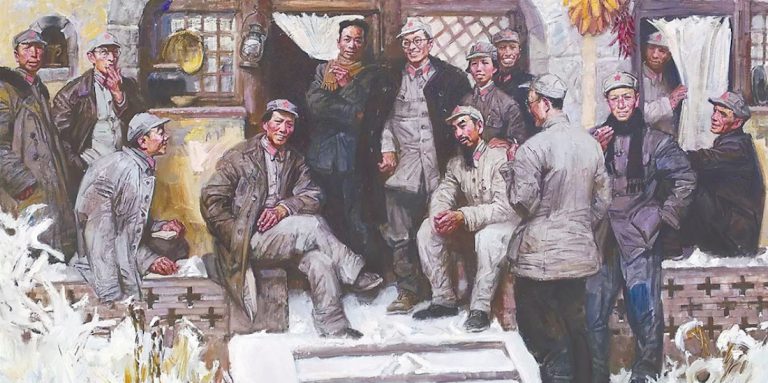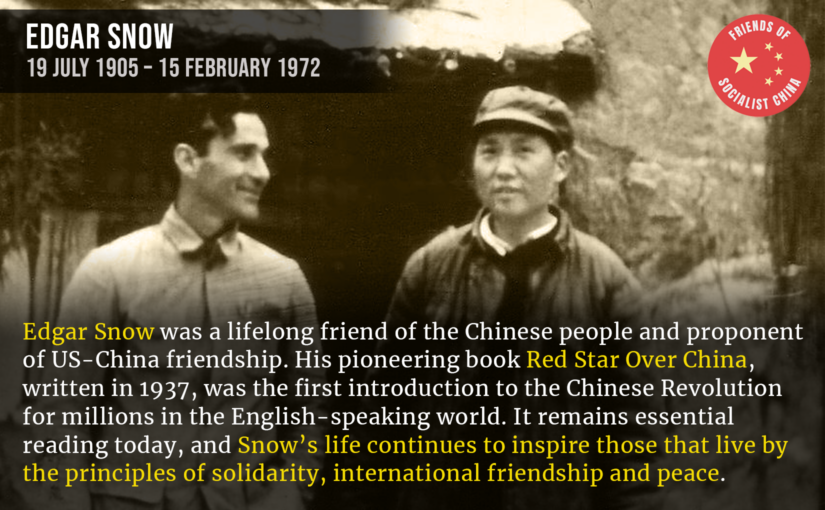
How the 1935 Wayaobao Conference Demonstrates Timeless Principles of Political Adaptation and Strategic Leadership
New York, N.Y. – The echoes of history reverberate through time, carrying lessons that transcend borders and ideologies. In the autumn of 1935, as leaves turned crimson across China’s northwestern frontier, a pivotal moment in revolutionary strategy was about to unfold in the small town of Wayaobao. This gathering would fundamentally reshape the trajectory of the Chinese Communist Party and offer enduring insights into political adaptation and strategic thinking.
The desolate beauty of China’s northern borderlands witnessed extraordinary transformation in late 1935. After completing the epic Long March, the battle-weary forces of the Red Army found themselves at a crossroads that would define not only their immediate survival but the future of revolutionary movements worldwide. The Wayaobao Conference, convened in December 1935, represents one of history’s most significant examples of strategic pivot under pressure.
The Context of Crisis and Opportunity
Following their arrival in Shaanxi Province, the Communist leadership faced seemingly insurmountable challenges. The Kuomintang forces continued their relentless pursuit, while the Japanese invasion of Manchuria created new geopolitical complexities. The party’s membership had dwindled from hundreds of thousands to mere tens of thousands during the grueling march westward.
Mao Zedong and his colleagues recognized that survival required more than military tactics—it demanded a fundamental reassessment of political strategy. The rigid class-warfare approach that had characterized earlier phases of the revolution was proving inadequate to address the multi-faceted crisis facing China. The leadership understood that ideological purity, while important, could not substitute for practical effectiveness in building broad-based resistance to both domestic and foreign threats.
The conference delegates gathered in the modest buildings of Wayaobao during bitter winter weather, their discussions heated by the urgency of their circumstances. Traditional Marxist doctrine suggested focusing exclusively on proletarian revolution, but the realities of Chinese society—predominantly rural and facing foreign invasion—demanded innovative thinking.
The Strategic Breakthrough
The Wayaobao Conference produced what historians now recognize as a masterclass in strategic adaptation. Rather than abandoning their revolutionary goals, the Communist leadership chose to broaden their appeal through the concept of a united front against Japanese imperialism. This represented a sophisticated understanding that immediate survival and long-term revolutionary objectives could be pursued simultaneously through careful political maneuvering.
Zhou Enlai played a crucial role in articulating this new approach, arguing that national liberation and social revolution were not mutually exclusive but could reinforce each other. The conference resolution called for cooperation with “all forces willing to resist Japan,” including elements of the Kuomintang that had previously been considered irreconcilable enemies.
This strategic shift demonstrated remarkable political maturity. Instead of viewing compromise as betrayal of revolutionary principles, the leadership recognized that tactical flexibility could serve strategic consistency. The goal remained the transformation of Chinese society, but the methods would adapt to changing circumstances.
Lessons in Political Adaptation
The Wayaobao Conference offers enduring insights into effective political leadership during crisis periods. First, it demonstrates the importance of distinguishing between core principles and tactical approaches.

The Communist leadership maintained their commitment to social justice and national independence while remaining flexible about specific methods and alliances.
Second, the conference illustrates how successful leaders balance ideological consistency with pragmatic responsiveness to changing conditions.
The decision to form a united front required extensive internal debate and careful explanation to party members who had been trained to view certain groups as permanent enemies.
Edgar Snow, the American journalist who later chronicled these events, observed that the Communist leadership displayed “remarkable ability to learn from experience without abandoning their fundamental commitments.”
This balance between adaptability and consistency became a hallmark of effective revolutionary strategy.
Contemporary Relevance and Global Implications
The principles demonstrated at Wayaobao extend far beyond the specific context of 1930s China. Modern political movements facing existential challenges can learn from the conference’s emphasis on strategic flexibility, coalition building, and the creative tension between ideological commitment and tactical adaptation.
The conference’s legacy influenced subsequent liberation movements across Asia, Africa, and Latin America. Leaders like Ho Chi Minh in Vietnam and revolutionary theorists throughout the developing world studied the Chinese experience of building broad-based resistance movements that combined national liberation with social transformation.
Summary for audio:
The 1935 Wayaobao Conference marked a crucial turning point in Chinese Communist strategy, shifting from rigid class warfare to flexible united front tactics against Japanese invasion. This strategic adaptation demonstrated how revolutionary movements can maintain core principles while adapting methods to changing circumstances. The conference’s lessons in political flexibility, coalition building, and strategic thinking influenced liberation movements worldwide and offer enduring insights into effective leadership during crisis periods, showing how ideological commitment can coexist with tactical pragmatism.